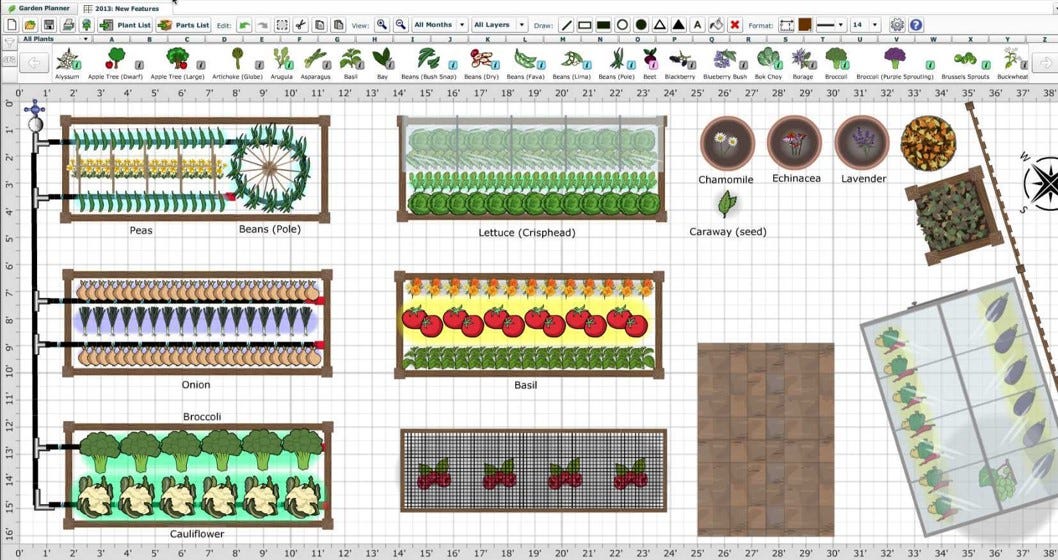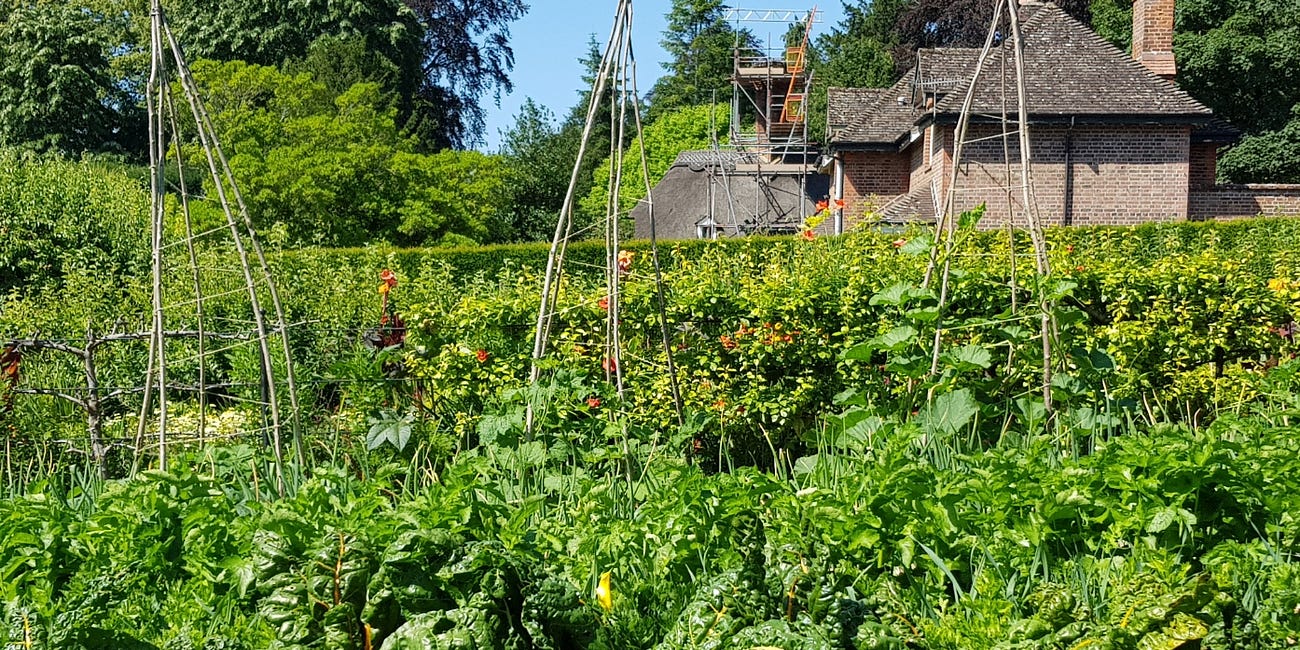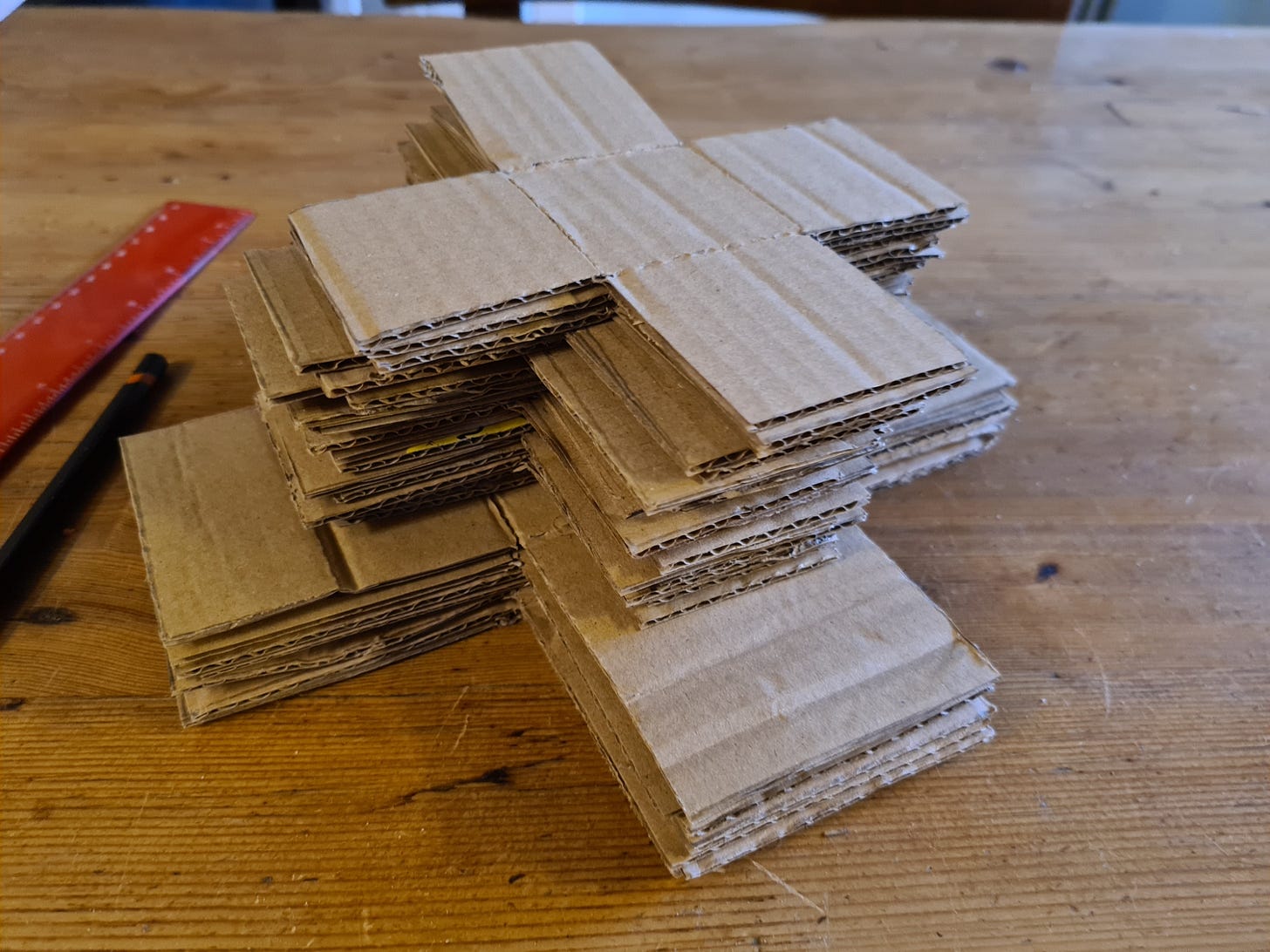That’s it: I have now officially designated January as Admin Month.
Really it was my only option. The ground is frozen hard outside, the floods of a few weeks ago now crystallised into silvery skating rinks. I still have crops in the ground, but the leeks and parsnips are welded into the earth too solidly to think about pulling so I must content myself with the ever-generous kale.
Had I had any foresight, I might have lifted a few to heel in to buckets of loose compost near the house out of the worst of the frost. This is a great little trick for root veg in winter: just lift as much of your crop as you think you’ll need for the next few weeks, tip about 15cm (6”) of old dryish compost or sand into the bottom of a bucket, then rest your leeks, beets or parsnips on top standing upright, just as they came out of the ground (no need to trim or clean).
Backfill with more loose compost to bury them about three-quarters of their height (for roots: just leave the shoulders showing), and they’ll stay like that quite happily for weeks till you’re ready to pull them out for cooking. Only thing is, you need to be organised enough to think of this as soon as you spot frost on the way in the weekly weather forecast – and I was too preoccupied with trying to keep off my rain-sodden beds at the time. Ah well.

I don’t plan my garden anything like as meticulously as I once did, mainly because I’ve moved away from crop rotation to a more polyculture kind of approach, where I just fill up beds with whatever crops I need to plant, as I need to. I just make sure that at the start of each season, I don’t begin in the same bed: since I tend to plant the same things at roughly the same time each year, if you don’t stagger it a bit you end up planting exactly the same crops in the same bed year after year – a recipe for pest and disease buildup, and nutrient deficiency too.
So I start in the next veg bed along each year, to move things about a bit. If you want some more detail about this approach, I talked about my more relaxed method of crop ‘rotation’ last year here:
Rotating crops: don't bother
I am not someone who readily does as they’re told. Ask my mum. You know those annoying children for whom every other sentence is “Why?” Well that’s me. As an adult. I think it may explain why I am self-employed. Anyway: so when some horticulture lecturer told me, or I read somewhere, or just received osmotically as wisdom passed down from gardener to gar…
I still have to work out what I want to grow though, and how much. This is a middlingly boring, nerdy approach to vegetable gardening, but it does help you to hit that elusive goal of providing all your fruit and veg needs in a steady stream for most of the year.
I know, for example, that I must grow 12 winter cabbages to get me through the cold months, since I have worked out through long experience that if I grow 10 I run out, whereas if I grow 15 a few end up on the compost bin at the end of the season. I know, I know: don’t judge. I’m channelling my inner accountant here.
Over the years I’ve developed a list of what I need to sow each month to give me what I need: I add to it, of course (this year, for example, there will be many more beans to feed into our growalong, which fills my heart with joy). But the basic ingredients – courgettes, onions, carrots, salads, chard, potatoes – are roughly the same, as these are the fresh foods I eat most of each year.
My next step is to pull out the seed packets and work out what I’ve already got, and what I need to buy in. It’s a simple routine, and a pleasantly meditative way to while away a rainy (or this week maybe, snowy) afternoon. Here’s the routine:
1) Pull out the stash of seeds from last year and work through them putting them into some sort of order, chucking out any older than 3-4 years, plus duplicates and varieties you know you’re never, ever going to get round to sowing. The old ones I compost and pop the packets in the recycling bin; the duplicates and unwanted seeds go to a seed swap.
2) Tick off the remaining seed packets against your list of seeds you need to sow each month. As I’m doing this, I file them under the month I need to sow them in, using cardboard dividers to keep them separate – that way they’re there ready to go when I need them.
3) Make a shopping list! If you’re buying in seed, though, do be careful where you get it from and make sure you choose seed suppliers which are local, organic and raise their own stock. More details in my post on sourcing seed sustainably here:
Sourcing sustainable seed
Ever wondered where the seed you sow actually comes from? I always thought (as much as I thought about it at all) that it was grown and collected in Suffolk, or Devon, or Essex, or wherever the seed merchant was based. But then I looked into it a little more closely and to be honest, I was a bit shocked by what I found.
Once that’s done, I turn to all the thin cardboard boxes I’ve been hoarding away all winter. An hour or two later and they’re all cut up and turned into piles of little templates for biodegradable pots. I leave them like this, in bundles of 8 (4” pots) or 24 (2” pots – that’s how many fills a seed tray), until I need to make up a trayful in spring for planting and sowing. Making them up ahead of time makes things so much easier when I’m in the full manic seed-sowing mode of spring.
So that’s me well on the way to being garden ready for spring! How are you readying yourself for spring? Share what you’ve been up to in the comments below!








I have just received your lovely book How to Garden the Low Carbon way - and to reduce my footprint even more I bought it second hand! Sorry you won't get the royalties though. But joy of joys I found it was signed copy!
As for what I’ve been up to to, on Friday I went to the allotment to prepare the garlic bed as it was a barmy 5c! The bed in question was covered in brambles, not so much now and I’m closer to planting the garlic. I still need to dig ditches around the bed to help with drainage and then I can plant the garlic. I start off the garlic in pots in the greenhouse because I’ve had problems growing garlic in the damp of winter.